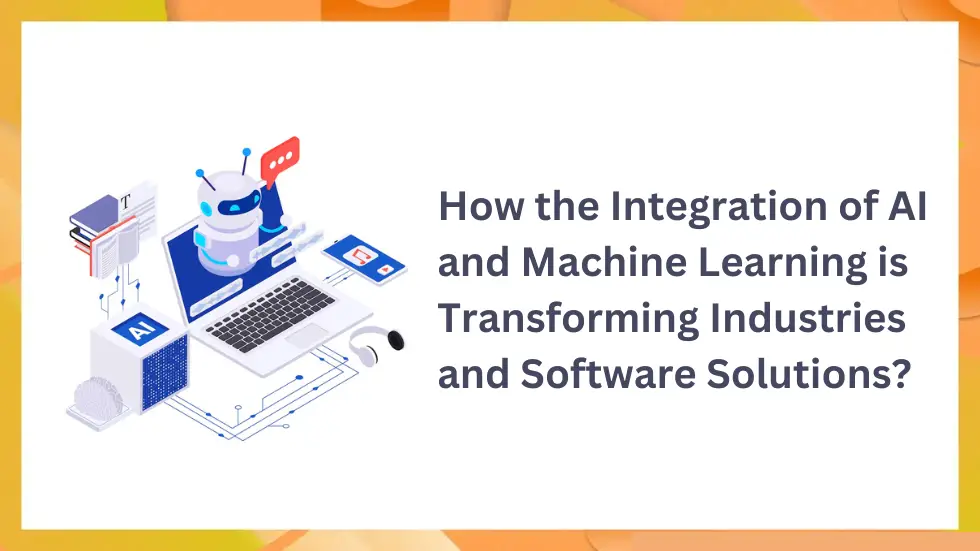The integration of AI and Machine Learning is revolutionizing the way modern businesses operate and compete. These two technologies, when combined, are powering intelligent automation, personalized user experiences, and data-driven decision-making across industries.
For enterprise companies, innovative startups, and seed-funded ventures, leveraging AI and ML is no longer a futuristic concept—it’s a strategic necessity. This blog explores what AI and ML are, how they complement each other, and why their integration is crucial for the future of scalable and intelligent software solutions.
What is Artificial Intelligence (AI)?
Artificial Intelligence refers to the ability of machines to simulate human-like intelligence. It allows systems to perform tasks such as reasoning, learning, problem-solving, perception, and language understanding. AI is the umbrella term that includes various subfields, including:
- Natural Language Processing (NLP)
- Computer Vision
- Robotics and Automation
- Expert Systems
AI can be categorized into narrow AI, which handles specific tasks like voice recognition or image classification, and general AI, which mimics comprehensive human cognition—although the latter remains largely theoretical.
What is Machine Learning (ML)?
Machine Learning is a core subset of AI that enables systems to learn from data, identify patterns, and make decisions without explicit programming for each task. It allows software to adapt and improve over time based on past experiences.
There are three primary types of machine learning:
- Supervised Learning: Trained using labeled datasets (e.g., fraud detection)
- Unsupervised Learning: Works with unlabeled data to find hidden patterns (e.g., market segmentation)
- Reinforcement Learning: Learns through trial and error using feedback (e.g., robotics and game AI)
ML plays a vital role in predictive analytics, intelligent automation, and real-time recommendation engines.
How AI and ML Work Together?
While Artificial Intelligence provides the goal—building machines that mimic human intelligence—Machine Learning offers the method to reach that goal. When integrated, they create adaptive systems capable of improving over time.
An AI-powered solution, such as a chatbot or recommendation engine, uses ML algorithms to learn from data and refine its responses or predictions. This continuous learning loop ensures that the AI becomes smarter with each interaction, making it highly valuable for enterprise applications.
Real-World Applications of AI and ML Integration
The integration of AI and Machine Learning is already delivering tangible business value in sectors such as:
Healthcare
- Early disease detection using medical imaging
- Personalized treatment recommendations
- AI-assisted robotic surgeries
- Patient data analytics and monitoring
Finance
- Real-time fraud detection
- Algorithmic trading strategies
- Automated credit scoring and risk modeling
Retail & eCommerce
- Personalized product recommendations
- Inventory forecasting and supply chain optimization
- Dynamic pricing and customer sentiment analysis
Manufacturing
- Predictive maintenance of machinery
- Quality assurance with computer vision
- Robotic process automation in production lines
Transportation & Logistics
- Autonomous vehicles
- Route optimization and traffic forecasting
- Smart warehouse automation
Education
- Adaptive learning systems
- Student performance prediction
- Automated grading and feedback
These use cases highlight how AI and ML in enterprise solutions are improving efficiency, reducing costs, and enhancing customer experiences.
Benefits of Integrating AI and ML
✔ Enhanced Decision-Making
Access to real-time data and predictive insights enables faster, smarter decisions.
✔ Intelligent Automation
Automating repetitive processes improves productivity and reduces human error.
✔ Personalized User Experiences
ML models learn user behavior to deliver tailored services and interactions.
✔ Scalable Business Solutions
AI and ML enable rapid adaptation to market changes and user needs.
Challenges in AI and ML Integration
Despite the advantages, integration comes with challenges:
- Data Quality & Availability: ML systems need clean, labeled data to perform accurately.
- Ethical & Privacy Concerns: Responsible use of customer data is critical.
- Lack of Transparency: AI decisions can be difficult to interpret (known as the “black box” problem).
- Security Risks: AI systems can be vulnerable to manipulation or bias.
- Skilled Talent Requirement: Expertise in AI/ML is in high demand and short supply.
Enterprises must navigate these challenges with careful planning, ethical oversight, and robust development practices.
Emerging Trends Shaping the Future
The future of AI and ML integration is full of potential. Here are some notable trends:
- Explainable AI (XAI): Making AI decisions transparent and understandable
- Edge AI: Running AI models on local devices for faster, offline processing
- Federated Learning: Collaboratively training models across decentralized devices while preserving data privacy
- AI-Powered Cybersecurity: Identifying threats before they cause damage
- Human-AI Collaboration: Enhancing human capabilities instead of replacing them
These innovations will continue to push the boundaries of what’s possible in AI-powered software development.
Conclusion
The integration of AI and Machine Learning is no longer optional—it’s an essential part of building scalable, future-ready software systems. Businesses that invest in these technologies are better equipped to innovate, respond to market demands, and deliver personalized experiences at scale.
However, to fully harness the benefits, organizations must approach AI and ML adoption with strategic intent, ethical responsibility, and technical expertise.
Looking to build AI-powered applications for your enterprise?
At EmbarkingOnVoyage Digital Solutions, we specialize in AI and ML integration, delivering scalable and intelligent solutions tailored to your business needs. Whether you’re a startup or an enterprise, our team is ready to guide you through every step of your digital transformation journey.
Additional Resources:
